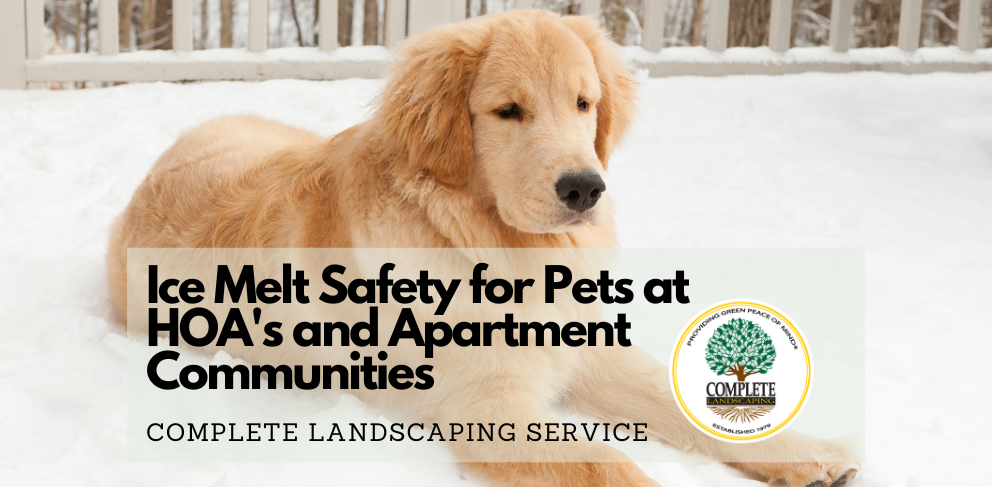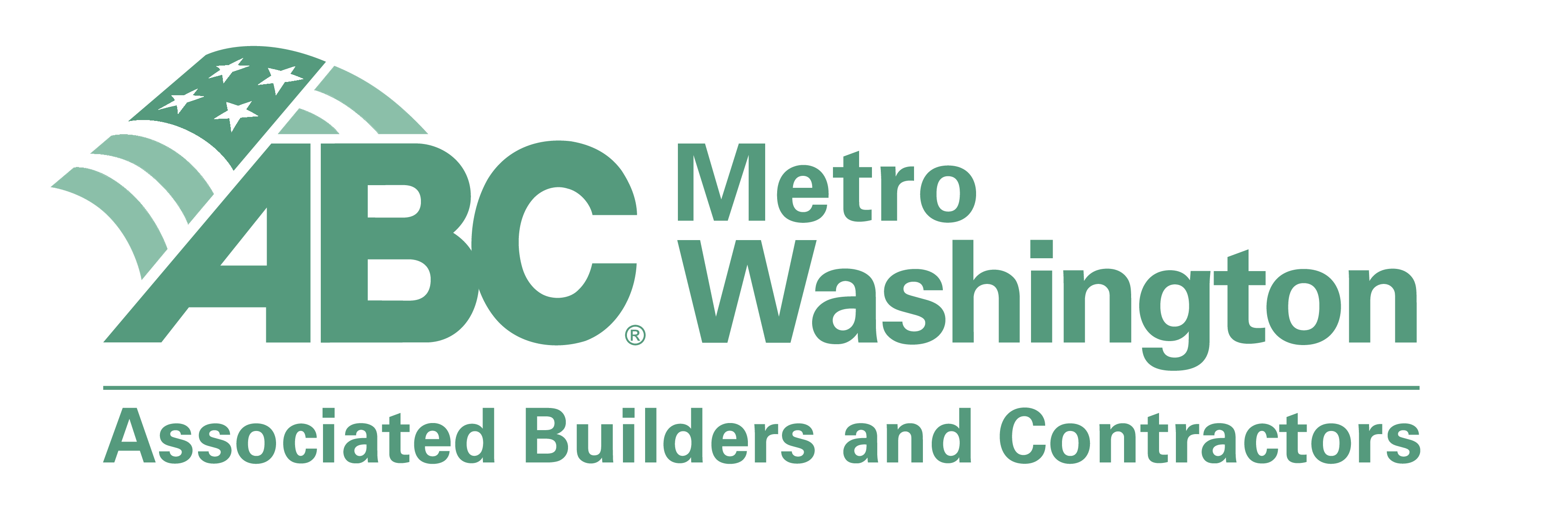Ice Melt Safety for Pets at HOA’s and Apartment Communities

Ice Melt Safety at Your HOA or Apartment Community
Winter weather presents many challenges for HOA’s and apartment communities. Keeping guests, residents, and employees safe while keeping the property accessible to emergency personnel is the primary goal. This is why ice melt plays a critical role in an effective and safe winter weather strategy. But what about pets and other animals? Are the products used to melt ice on asphalt, concrete, and other hard surfaces safe for our four-legged friends?
The answer is you can never be too safe!
Most Common Ice Melt Ingredients
- Sodium – Sodium chloride is the most commonly used material for ice melting because it is inexpensive compared to other products, and it is effective down to roughly 20 degrees Fahrenheit.
- Potassium – Potassium chloride melts ice down to 12 degrees Fahrenheit and is considered safer than sodium to use around vegetation and landscaping plants. Safe to use on concrete and pavers.
- Magnesium – Magnesium chloride is able to melt ice down to 5 degrees Fahrenheit and is also safe to use around vegetation, concrete, and metal surfaces. Safer to use around animals and pets.
- Calcium – Calcium chloride has the widest range of temperatures where it is effective at melting ice. Fast acting and releases heat as it melts ice and snow. Can damage vegetation and concrete with prolonged use.
How Ice Melt Products Work and Why it Matters at HOA’s and Apartment Communities
Ice melt products with only one of the ingredients above can be found, but more commonly, ice melts are made up of a blend of these products. Blends tend to be more effective at melting ice and snow over a wide range of temperatures. This makes them more versatile in a variety of winter weather situations.
However, most of these ingredients are not safe for pets. This is why ice melt safety for the pets crucial in managing your HOA or apartment community.
What Makes Ice Melt Pet Safe?
The two most common concerns about ice melting products and pets are if the ingredients will dry out of their skin and what happens if they ingest this harsh chemicals. These ice melt ingredients can potentially cause stomach upset and can burn pets paw pads. Using pet safe ice melt products aims to reduce these irritations. Many of the products labeled as “pet safe” contain a product that we didn’t describe above and that is urea.
Urea is a nitrogen compound and is often found in fertilizer. Out of all of the ingredients used in ice melt, urea is least harmful to pets and children, but unfortunately, it’s not very effective at melting ice. Since it is not very effective at melting ice, it tends to be over applied. Excess urea is dangerous to turf and landscaping, but the effects aren’t seen until spring. What you need to know is that when you apply any type of chemical, it can impact pets. Because of this, we have come up with some extra steps to keep the pets at your HOA’s and apartment communities safe.



Extra Steps and Ice Melt Safety for Pets
There are ice melting products that are labeled as “safe” for pets, but taking a few extra precautions during winter weather will ensure that HOA and apartment community managers and residents have a trouble-free winter.
Step 1:
Walk on Untreated Snow
When possible, allow your pet to walk on untreated snow. It may be tempting to walk in the street or sidewalk because these surfaces are typically cleared by snow contractors. Both of these paved surfaces will typically have ice melt products present that can still irritate your pets’ paws. So if you can walk on the pavement and allow your pet to walk in the snow, do it!
Step 2:
Wipe Feet and Paws Off
Wipe your feet and your pets’ feet when you return inside. Pellets and granules of ice melt can get caught in between your pets’ pads where they can irritate their skin or even worse, continue to produce heat and burn their skin. Taking a small towel and wiping their feet helps to remove residual ice melt. Wiping your feet and putting shoes or boots in a tray keeps ice melt or brine from not only being tracked through the HOA or apartment community but also inside the home where pets may be tempted to lick or ingest the residue.
Step 3:
Research the Ice Melt Ingredients and Products
If you are responsible for treating your own walks, driveways, and exterior surfaces, read the labels. If a product is marked as, “not safe for children”, it’s likely not safe for your pets either. Also, take note of the ingredients and the product form. For pets, flake products may be a better option then pellets.
Step 4:
Protect Pets’ Paws
Boots. I know. It sounds silly. My dogs certainly wouldn’t allow me to put boots on their feet, but there are a remarkable number of pets that will tolerate these protective shoes and they are extremely effective at keeping pets’ feet and skin out of contact with ice melt chemicals.
Step 5:
Keep an Eye Out
Watch for unusual behavior. Pets that have ingested ice melt chemical will typically experience stomach upset or nausea and may also need to urinate more frequently. They may also be licking their feet excessively which may indicate dry or cracked paw pads. In severe cases will exhibit muscle weakness.
Complete Landscaping Service: Servicing HOA’s and Apartment Communities
At Complete Landscaping Service we have been servicing HOA’s and apartment communities for over 40 years. Contact our team of professionals today to see how we can help you keep your property and pets safe during the winter months! Our team is excited to work with you.
If you aren’t already part of our Complete Family, we would love to add you to our family tree!
Request a consultation online to meet with us in person! Call us at 1-800-383-0440!
We can’t wait to hear from you!







yes, I agree with your point There are ice melting products that are labeled as “safe” for pets, but taking a few extra precautions during winter weather will ensure that both you and your pets have a trouble-free winter.